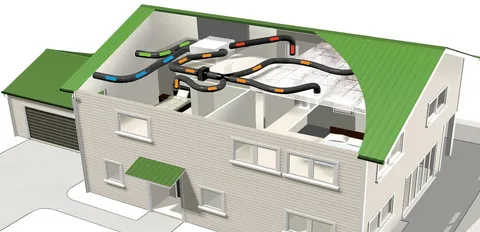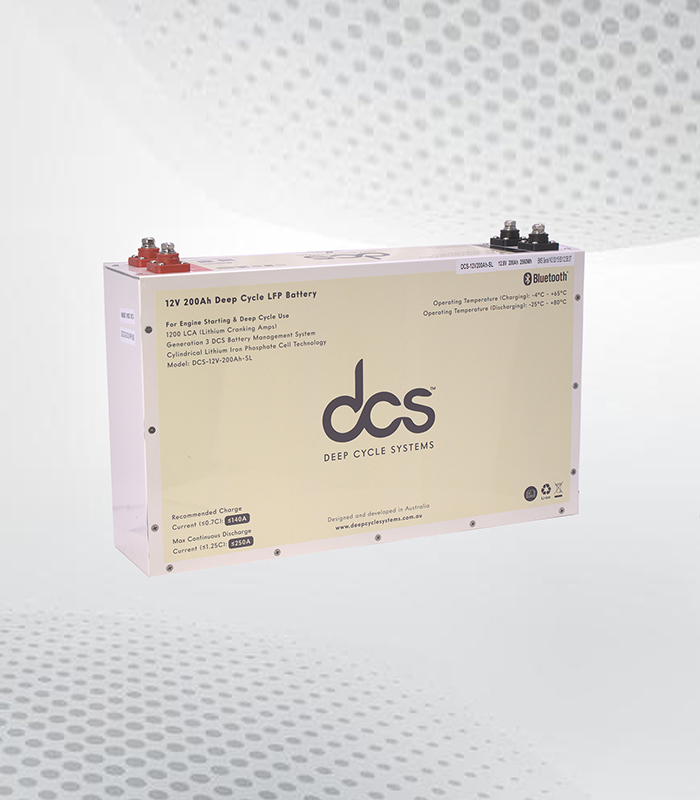Imagine walking into your home and taking a deep breath of fresh, clean air. Sounds dreamy, right? Well, it’s not just a fantasy; it’s the promise of optimal House Ventilation. Many homeowners overlook the critical role that proper ventilation plays in creating a comfortable living environment. It’s about more than just keeping things breezy—ventilation is essential for your health and well-being. Curious to learn how to transform your home into an oasis of freshness? You’re in the right place! Let’s dive deeper into everything you need to know about Home Ventilation—it might just change how you breathe at home!
The Importance of Proper Ventilation in a Home
Proper ventilation is crucial for maintaining a healthy home environment. It ensures fresh air circulation, which directly impacts indoor air quality. Stale air can lead to the accumulation of pollutants and allergens.
A well-ventilated house helps regulate humidity levels, preventing mould growth and structural damage. Excess moisture can cause wood rot or paint peeling, leading to costly repairs.
Good ventilation also contributes to energy efficiency. By allowing your HVAC system to operate more effectively, you reduce energy consumption and lower utility bills.
Additionally, it creates a comfortable living space by balancing temperature throughout the rooms. No one likes feeling stuffy or overheated in their own home.
Investing in proper ventilation protects your health and enhances the longevity of your property. This simple yet effective measure makes all the difference for homeowners who want comfort and sustainability.
Common Issues Caused by Poor Ventilation
Poor ventilation can lead to a host of issues in your home. One major concern is the buildup of indoor air pollutants. Dust, allergens, and mould thrive in stagnant air, posing health risks for you and your family.
Another common problem is excess humidity. This can result in condensation on walls or windows, leading to unpleasant odours and potential structural damage over time.
Inadequate airflow can also cause temperature imbalances. Certain rooms may feel stuffy, while others remain too cold. This discomfort often increases energy bills as heating or cooling systems work harder than necessary.
Poor ventilation can significantly shorten the lifespan of appliances. Without proper airflow, appliances like dryers and refrigerators must exert more effort to function efficiently, leading to premature breakdowns and costly repairs.
Different Types of House-Ventilation Systems
When it comes to Home Ventilation systems, there are several options. Each system caters to different needs and preferences.
Natural ventilation relies on wind and thermal buoyancy. It utilizes windows, vents, and other openings to promote airflow. This method is eco-friendly but can be inconsistent in extreme weather.
Mechanical ventilation uses fans or blowers to circulate air. One popular type is the exhaust fan, which removes stale air from kitchens and bathrooms.
Balanced systems combine both supply and exhaust methods. They maintain indoor air quality while preserving energy efficiency.
Heat recovery ventilators (HRVs) are more advanced. They exchange stale indoor air with fresh outdoor air while minimizing heat loss during colder months.
With various types available, selecting the right one depends on your home’s layout, climate, and personal comfort preferences.
Some other types of ventilation systems include:
- Cross Ventilation – This system utilizes two openings, typically on opposite sides of a room or building, to promote natural airflow.
- Spot Ventilation – This localized form of mechanical ventilation targets specific areas such as kitchens and bathrooms.
- Whole-House Fans—These fans use the natural breeze to cool a house by pulling hot air out through attic vents and bringing in cooler air from outside.
- Attic Ventilation – Attic ventilation helps regulate temperature and moisture levels in your attic by promoting airflow.
- Solar-Powered Ventilation – This type of ventilation uses solar panels to power exhaust fans, providing energy-efficient circulation throughout the house.
- Air Purification Systems – These systems filter and purify indoor air by removing allergens, pollutants, and odours.
- Geothermal Ventilation Systems – This system utilizes geothermal energy to heat or cool the house, providing heating and cooling functions while saving energy costs.
Ultimately, the best type of Home Ventilation system for you will depend on your specific needs and preferences. It is recommended that you consult with a professional to determine the most suitable option for your home.
Benefits of Optimal House-Ventilation
Optimal Home Ventilation plays a pivotal role in enhancing indoor air quality. Fresh air circulation effectively reduces pollutants, allergens, and harmful moisture buildup.
A well-ventilated home creates a comfortable living environment. It helps regulate temperature and humidity levels year-round. This balance can significantly improve overall comfort for you and your family.
Energy efficiency is another key benefit. Proper ventilation systems work harmoniously with heating and cooling units, ensuring they operate at peak performance without overexertion.
Additionally, good ventilation safeguards against structural damage. Moisture control prevents mould growth and wood rot, extending the lifespan of your home’s materials.
Investing in optimal Home Ventilation also promotes better health. When breathing cleaner air consistently, you may notice fewer respiratory issues or allergies.
Many homeowners appreciate the potential for lower energy bills as their HVAC systems function more efficiently under improved ventilation conditions.
Tips for Improving Air Quality and Energy Efficiency in Your Home
Start with regular HVAC system maintenance to enhance air quality and boost energy efficiency at home. Clean or replace filters every few months to ensure clean airflow.
Incorporate houseplants into your decor. They can naturally purify the air while adding a touch of nature to your space. Spider plants and peace lilies are great choices.
Consider using exhaust fans in kitchens and bathrooms. This helps eliminate the excess moisture, which can lead to mould growth over time.
Seal any drafts around windows and doors with weather stripping or caulk. This simple step prevents conditioned air from escaping, saving energy costs.
Monitor humidity levels using a hygrometer. Aim for 30-50% humidity indoors for optimal comfort and health. Adjusting humidity improves air quality and maintains energy efficiency throughout your home.
Invest in an air purifier or air cleaner. These devices can help remove pollutants and allergens from the air, improving overall air quality.
Switch to energy-efficient light bulbs, such as LED or CFL bulbs. They use less energy and last longer than traditional incandescent bulbs.
Use natural cleaning products instead of harsh chemicals. This not only reduces indoor air pollution but also helps protect the environment.
Regularly clean and declutter your home to reduce dust and other airborne particles. This can also improve the efficiency of your HVAC system by allowing for better airflow.
Consider upgrading to energy-efficient appliances like refrigerators, dishwashers, and washing machines. Look for Energy Star-certified models that use less energy and water.
Properly ventilated gas appliances, such as stoves and furnaces, to prevent carbon monoxide buildup in your home. Have a professional checked these appliances regularly to ensure they are functioning safely and efficiently?
Consider installing a programmable thermostat to regulate temperature and save on energy costs. You can set it to adjust the temperature while you are away from home or asleep, saving on heating and cooling expenses.
By following these tips, you can improve your home’s air quality while increasing its energy efficiency. Not only will
Installation Tips: Ensuring Effective Ventilation
Location matters when installing a ventilation system. Identify areas in your home where moisture and pollutants gather. Kitchens and bathrooms often need the most attention.
Ensure proper duct sizing. Undersized ducts can restrict airflow, while oversized ones may lead to energy loss. Use a professional or follow local codes for guidance on dimensions.
Check insulation around ducts too. Gaps can let heated or cooled air escape, undermining efficiency. Seal any openings with appropriate materials to maintain optimal airflow.
Regular maintenance is essential post-installation. Clean filters frequently and inspect vents for blockages or damage every few months.
Consider smart controls that allow you to monitor air quality remotely. These systems adjust ventilation based on real-time data, enhancing comfort while saving energy.
Always consult an expert during installation if you’re unsure about specifics—it’s worth the investment for long-term performance and air quality benefits.
Comparing Ventilation Options: Which System is best for you?
When it comes to ventilation systems, choosing the right one can feel overwhelming. Each option has its strengths and weaknesses.
Mechanical ventilation is popular for its controlled airflow. Systems like heat recovery ventilators (HRVs) and energy recovery ventilators (ERVs) exchange stale air with fresh outdoor air while conserving energy.
Natural ventilation uses design features such as windows and vents to promote airflow. It’s cost-effective but may not suffice in extreme weather conditions.
Ductless mini-split systems offer flexibility and efficiency, especially in smaller homes or retrofits. They provide heating and cooling along with fresh air circulation.
Consider your home’s layout, climate, and budget before deciding. Consulting a professional can help tailor options specific to your needs. Every home is unique; understanding these differences ensures you choose wisely for optimal comfort and health.
Customer Experiences and Testimonials
Many homeowners have shared their journeys towards improved air quality through optimal ventilation systems. One customer, Sarah from Austin, noticed a significant reduction in allergens after installing an energy recovery ventilator. She remarked how her family now breaths easier during allergy season.
John, a contractor in Seattle, experienced remarkable changes after upgrading to a balanced ventilation system. He highlighted the consistent temperature throughout his home and the comfort it brought during those chilly winters.
Jessica’s family had struggled with musty odors for years until they implemented a whole-house fan solution. The immediate freshening effect transformed her living space into a more inviting environment.
These testimonials reveal satisfaction and enhanced well-being through better air circulation. Each story paints a picture of personalized improvements that resonate with many seeking healthier living conditions at home.
Conclusion
Creating a well-ventilated home is essential for your health and comfort. The right airflow can enhance indoor air quality, making your breath more pleasant. Investing in optimal House Ventilation systems helps reduce allergens and improves energy efficiency. This means lower utility bills and a reduced carbon footprint. As you explore different options, consider your space’s unique needs. Each home presents its challenges and opportunities regarding ventilation. Remember, it’s about finding balance. Fresh air should flow freely while maintaining temperature control. Your living environment deserves nothing less than optimal conditions. Whether renovating or seeking improvement, every step counts towards better air quality.
FAQs
Understanding Home Ventilation is crucial for maintaining a healthy and energy-efficient home. Here are some frequently asked questions to help clarify common concerns.
What are the signs of poor House Ventilation?
Indicators of poor House Ventilation include stale air, excessive humidity, mould growth, or noticeable odours. If you experience these issues, it may be time to assess your ventilation system.
How can I improve air quality without major renovations?
Simple steps like using exhaust fans when cooking or showering, keeping windows open when weather permits, and regularly changing HVAC filters can significantly enhance indoor air quality.
Are there any cost-effective options for improving my home’s ventilation?
Yes! Simple solutions such as installing window vents or using portable air purifiers can help boost airflow without breaking the bank.
Addressing your home’s ventilation needs improves comfort and promotes a healthier living environment. Explore options that best fit your lifestyle and enjoy the benefits of clean air for years to come.
| Related Business Listings |
| Contact Directory |
| Local Business Profiles |




